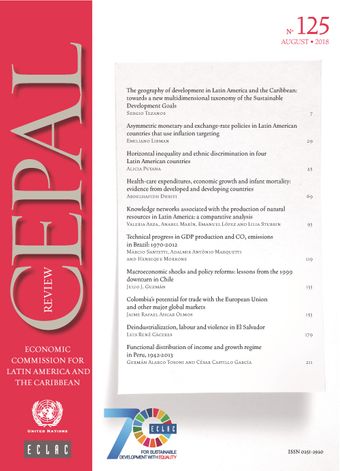-
Functional distribution of income and growth regime in Peru, 1942-2013
- Source: CEPAL Review, Volume 2018, Issue 125, Aug 2018, p. 211 - 227
- Spanish
-
- 04 Feb 2019
- Previous Article
- Table of Contents
- Next Article
Abstract
This paper begins by reviewing the literature on the relation between economic growth and the functional distribution of income since the time of the classical economists, highlighting the work of Kalecki and the post-Keynesians who develop the growthregimes approach. It reconstructs and analyses statistics on the shares of wages, income from self-employment (or from mixed sources) and profits in Peru’s GDP between 1942 and 2013, and then compares these shares with the averages for Latin America and other economies. The study then makes a comparative analysis of trends in the wage share and rate of growth, and it estimates a simultaneous equations model using three-stage least squares (3SLS) and generalized method of moments (GMM) to determine the growth regime. The conclusion is that growth is wage-led, so distributional policies to increase this component would likely boost the level of economic activity.





